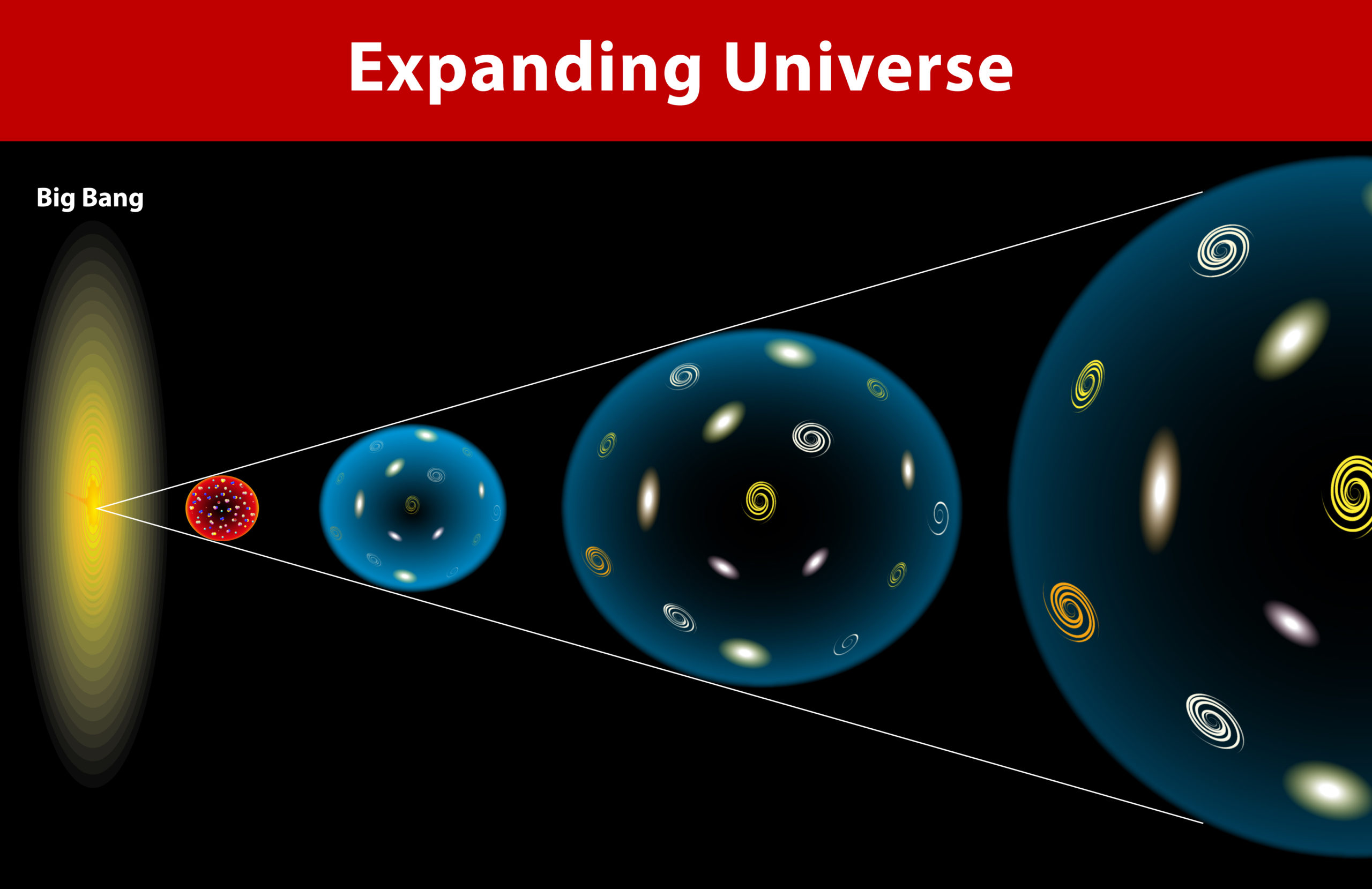 illustration from Science Sparks
illustration from Science Sparks
The Expanding Universe: Unveiling the Mysteries of Cosmic Expansion
The universe, a vast and complex realm, has always fascinated us. From ancient thinkers to modern scientists, we've strived to understand its origins and destiny. A pivotal discovery of the 20th century revealed that the universe isn't static but constantly expanding. This article explores the evidence, mechanisms, challenges, and implications of this cosmic expansion.
The Discovery of Cosmic Expansion
Our understanding began with observations in the early 1900s. Vesto Slipher noted that spiral nebulae (now known as galaxies) showed redshifts, meaning they were moving away from us. The greater the redshift, the faster they receded.
Edwin Hubble then linked a galaxy's distance to its recessional velocity. Using the Hooker telescope, he found that galaxies move away faster the farther they are from us. This is Hubble's Law:
v = H0d
Where:
- v is the galaxy's speed of recession
- H0 is the Hubble constant, the expansion rate
- d is the distance to the galaxy
Hubble's Law implied a uniformly expanding universe, like an inflating balloon, challenging the idea of a static cosmos and leading to the Big Bang theory.
Evidence Supporting the Expanding Universe
Besides Hubble's Law, other evidence bolsters the expanding universe:
- Cosmic Microwave Background (CMB): The CMB, the Big Bang's afterglow, permeates the universe. Its properties support a hot, dense early universe that has been expanding and cooling. Temperature fluctuations in the CMB reveal early structure and composition.
- Abundance of Light Elements: The Big Bang theory accurately predicts the amounts of hydrogen, helium, and lithium in the early universe, matching observations of ancient stars and gas clouds.
- Large-Scale Structure of the Universe: Galaxies form a cosmic web of clusters, filaments, and voids, created by the gravitational amplification of density fluctuations in the early, expanding universe.
- Type Ia Supernovae: These stellar explosions have a consistent brightness, making them useful for measuring cosmic distances. Observations of distant Type Ia supernovae show that the universe's expansion is accelerating.
The Accelerating Expansion and Dark Energy
The accelerating expansion, discovered in the late 1990s, revealed that the universe's expansion rate is increasing. This acceleration cannot be explained by known matter and energy.
Cosmologists suggest "dark energy" accounts for about 68% of the universe's energy density and has negative pressure, causing a repulsive force. The nature of dark energy is a major mystery.
Theories about dark energy include:
- Cosmological Constant: The simplest idea is a constant energy density permeating space, equivalent to vacuum energy. However, its observed value is much smaller than predicted, causing the "cosmological constant problem."
- Quintessence: Dark energy is a dynamic field that evolves over time, explaining accelerated expansion without a finely-tuned cosmological constant.
- Modified Gravity: The acceleration isn't from dark energy but from changes to Einstein's general relativity, altering gravity on large scales.
The Hubble Constant Tension
A key challenge is the "Hubble constant tension." Different methods yield conflicting values for the Hubble constant.
CMB-based measurements give a lower value (around 67 km/s/Mpc), while Type Ia supernovae measurements give a higher value (around 73 km/s/Mpc). This discrepancy is statistically significant.
The tension suggests that our understanding is incomplete, potentially requiring new physics. Possible solutions include:
- Early Dark Energy: A period of early dark energy affected the expansion rate and CMB.
- Modified Gravity: Some modified gravity theories could resolve the tension by changing the universe's expansion history.
- New Particles: Sterile neutrinos or interacting dark matter could affect the expansion rate and resolve the tension.
The Future of the Universe
The universe's future depends on dark energy. Possible fates include:
- Big Rip: Increasing dark energy tears apart everything.
- Big Freeze (Heat Death): Continued acceleration leads to a cold, empty universe.
- Big Crunch: Dark energy decays, causing the universe to contract into a singularity.
- Big Bounce: A Big Crunch is followed by another Big Bang, a cyclic universe.
Tools and Techniques for Studying Cosmic Expansion
We use various tools to study the expanding universe:
- Telescopes: Ground- and space-based telescopes observe distant objects.
- Spectroscopy: Measures redshifts to determine recessional velocities.
- Cosmic Microwave Background (CMB) experiments: Map the CMB for early universe information.
- Supernova surveys: Discover and study Type Ia supernovae for distance measurements.
- Gravitational Lensing: Observing how gravity distorts light.
Challenges and Future Directions
Challenges remain:
- Nature of Dark Energy: Future experiments will probe dark energy's properties.
- Hubble Constant Tension: Improving measurements and exploring alternative methods are needed.
- Early Universe Physics: Understanding the early universe is essential.
- Dark Matter: Modelling role of dark matter.
Conclusion
The expanding universe has revolutionized cosmology. The quest to understand it drives progress in astrophysics.
The accelerating expansion and dark energy present major challenges. Resolving the Hubble constant tension requires theoretical advancements and innovative experiments. As we explore, we'll refine our understanding.
Explore further! Share this article and stay updated with reputable science news.
Published on February 17, 2025
reference: Various Article on internet
Gema
Wordsmith and content writer passionate about creating high-quality content that informs, entertains, and inspires. Let me bring your brand's story to life.
All stories by : Gema

0 Comments